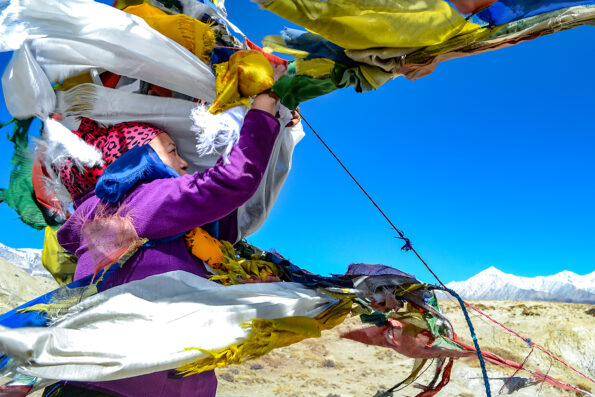
Yam Kumari Kandel, GPJ Nepal
Sangita Thapa Magar was treated at Kathmandu Medical College in Nepal, following an acid attack in February 2015.
KATHMANDU, NEPAL — Sangita Thapa Magar, with bandaged chemical burns on her face and undergoing treatment at Kathmandu Medical College Teaching Hospital, clearly told police what had happened. While she and a schoolmate were awaiting tutoring on Feb. 22, 2015, a young man she knew threw acid at her and ran. Magar, then 16, suspected he did this because he’d had a fight with her brother.
Under pressure from women and human rights activists, the police arrested the suspect about a month later. In December 2015, the Kathmandu District Court sentenced Jiwan Bishwokarma to 10 years in jail, under article 15 of the murder chapter of Nepal’s penal/criminal code (or Muluki Ain).
He is appealing that verdict, arguing that his crime was an act of revenge, not murder, and should be tried instead under the code’s assault chapter, which has a relatively new provision, adopted in October 2015, to punish those who inflict pain from acid or other chemicals depending on the severity of the crime, according to Bimala Khadka, a lawyer with the Forum for Women, Law and Development (FWLD) who is advocating on Magar’s behalf.
If the face is deformed, as in Magar’s case, a jail term of five to eight years and fines of 100,000 rupees to 500,000 rupees ($920 to $4,600) may be imposed. Lesser punishments are imposed for damage to other parts of the body.
Magar and advocates like Khadka say more should be done to punish perpetrators and compensate the targets of the attacks. They await a decision by Nepal’s Supreme Court in response to a lawsuit brought by FWLD that seeks to force the government to establish a compensation fund and the Ministry of Health to establish a special burn unit, where those harmed would receive free medical treatment.
In Magar’s case, it took her a week after the attack to regain consciousness, and she says her suffering and costs far exceeded the 100,000 rupees ($920) in compensation she received from the government for medical bills.
“I have been enduring the punishment more from surviving than the punishment from the crime of murder. I have been suffering pain more than when dying. I know the pain of dying daily and dying at once,” she says.
When chunks of skin began peeling from her face after the burn, she says, “[I] searched for a window to jump out and die. But I did not find any opportunity there to jump out of the window.”
The writ before the Supreme Court also calls on the government to force those found guilty of such crimes to pay their earnings while incarcerated directly into the compensation fund, according to FWLD president Meera Dhungana.
“There is no alternative to making a separate legal arrangement to provide relief to burn victims and hand down punishment to the perpetrator immediately,” Dhungana says.
Acid attacks are not uncommon in Nepal nor in neighboring India, where the government recently set up the kind of program that the FWLD lawsuit seeks for Nepal.
Sunaina Singh Shrestha, program officer at Burns Violence Survivors-Nepal, says attacks often target women ages 20 to 25 who have rejected love proposals. Seventeen attacks have been registered at Nepal police headquarters since 2005, according to Madhav Prasad Joshi, a former police spokesperson who says more should be done to restrict access to acid, and who encourages additional awareness campaigns to curb acid attacks.
On doctors’ advice, Magar covers her face with a mask when she goes out, as sunlight would scorch her skin. Magar says her classmates and even many of her old friends no longer speak to her. People often stare. She is studying management at Nobel College in Baneshwor with a limited scholarship provided by Sanima Bank, which is due to end soon. She says her dream of becoming doctor is dashed, because she has had to spend so much time in treatment and recovery. Muscles in her eyes, face, hand and thigh had to be transplanted.



Magar says she would continue her education if given the opportunity.
Although many pledged to contribute to her education and treatment, the promises have not materialized, she says. “All those commitments were limited to their words,” she says.
Special rehabilitation and treatment is necessary in the aftermath of an acid attack, Magar said. “Only survivors of an acid attack know the pain of burns,” she says. “They lack treatment, love and help.”
Sagar Ghimire translated this article from Nepali.







